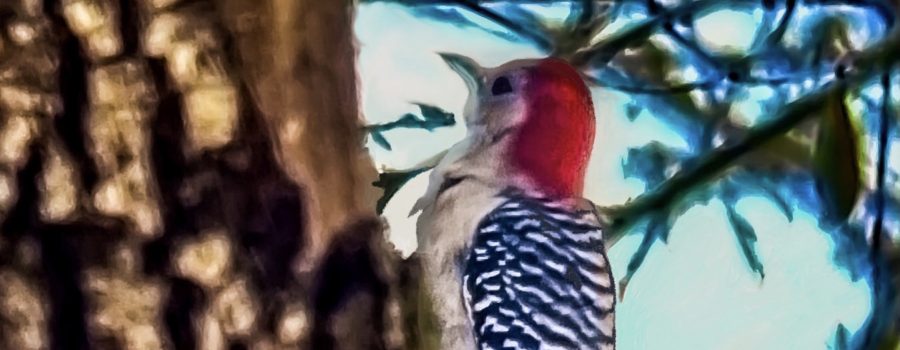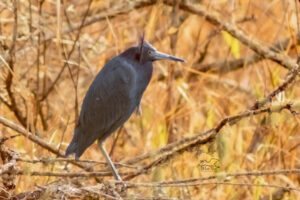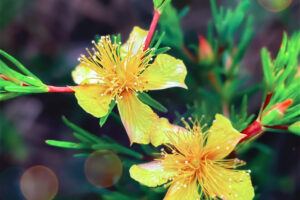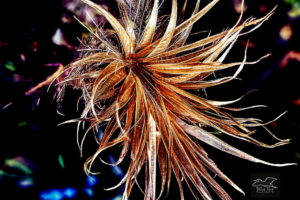The Red-bellied Woodpecker is a Fancy, Colorful Bird

We have several types of woodpeckers here in central Florida and more specifically the sandhills habitat. I have already discussed the largest, most distinctive one we have, the pileated woodpecker (Dryocopus pileatus), but there are quite a few others. Probably the most common one I see around my wooded property is the red-bellied woodpecker (Melanerpes carolinus). It is considerably smaller than the piliated woodpecker and has fancier markings, although they are still primarily black and white with red on the head. The males and females look similar, but males have a much larger red spot than females do. In males, the red runs from the bill over the head and down the nape of the neck. In females, like the one in this photo, the red spot is mostly on the nape and does not extend the whole way over the top of the head. You might wonder, since the red is on the head why it’s not called the red-headed woodpecker, but that name is already given to another bird in this family (Picidae) with more red on the head. Instead, the red-bellied woodpecker is named for the small red spot that’s on the belly, but is difficult to see in the field.
The red-bellied woodpecker is found in the eastern half of the United States from Massachusetts south through Florida and as far west as eastern Texas and Michigan. They are mainly insectivores, but they regularly supplement their diets with fruits and seeds. At my house they are regular visitors to the suet blocks. They tend to be sedentary, even in the northern parts of their range. They nest in hollow areas in both living and dead trees, and loss of tree filled habitat has lead to declines in their numbers in many areas. These birds mainly hunt by looking for beetles and other insects under the bark of various types of trees, but they can also catch flying insects in the air. Both parents actively feed the young and guard the nest.
This bird was actually photographed last year during the spring. She spent quite a bit of time feeding in either the oak trees or at the suet cake. I assumed that she had a nest nearby and was feeding young, but I never saw any male around. I wasn’t out there looking all the time, so he might have been around at times when I wasn’t. It’s also possible that he hunted in a different area (there are plenty of good feeding trees around), or that something had happened to him. I don’t know. This year, I definitely have a pair in the area, but they rarely visit the feeder, so I only see them infrequently.





Recent Comments